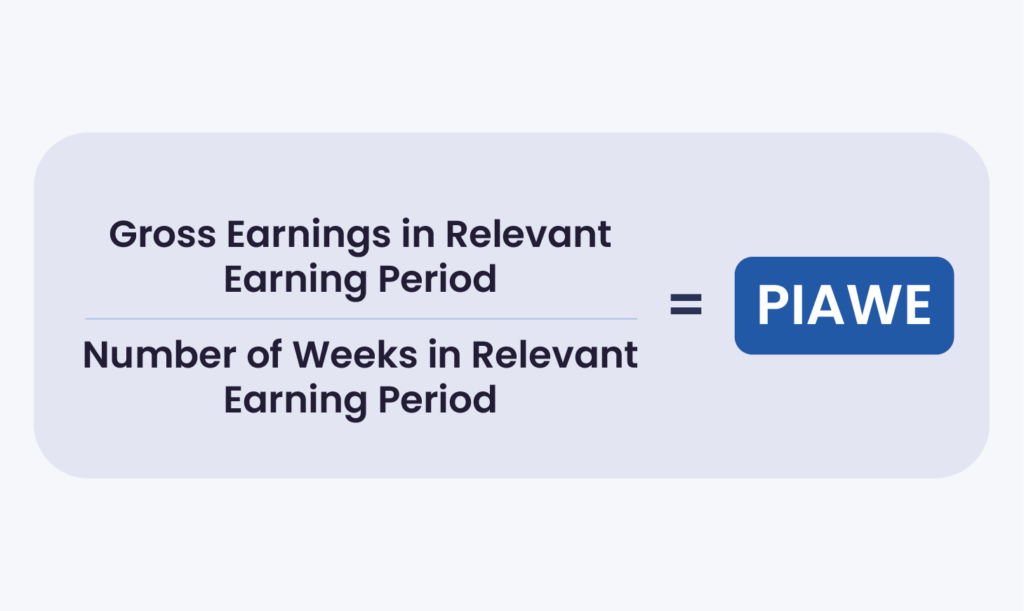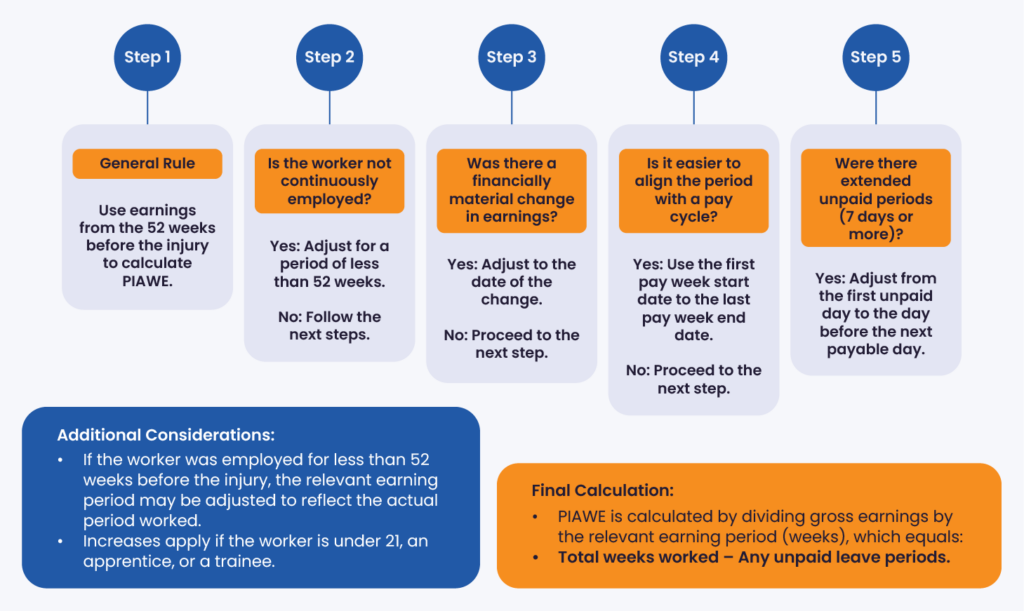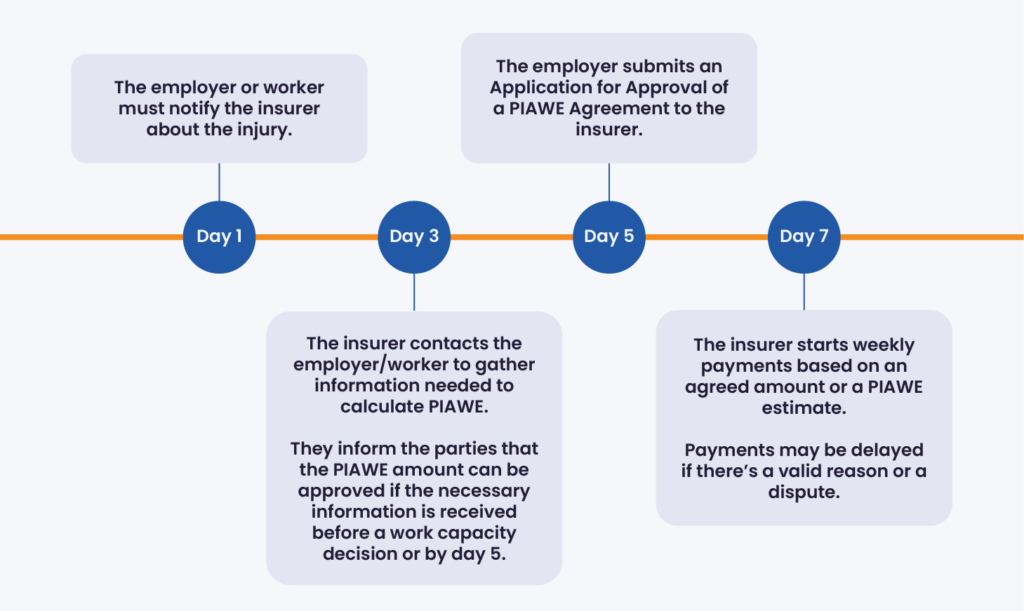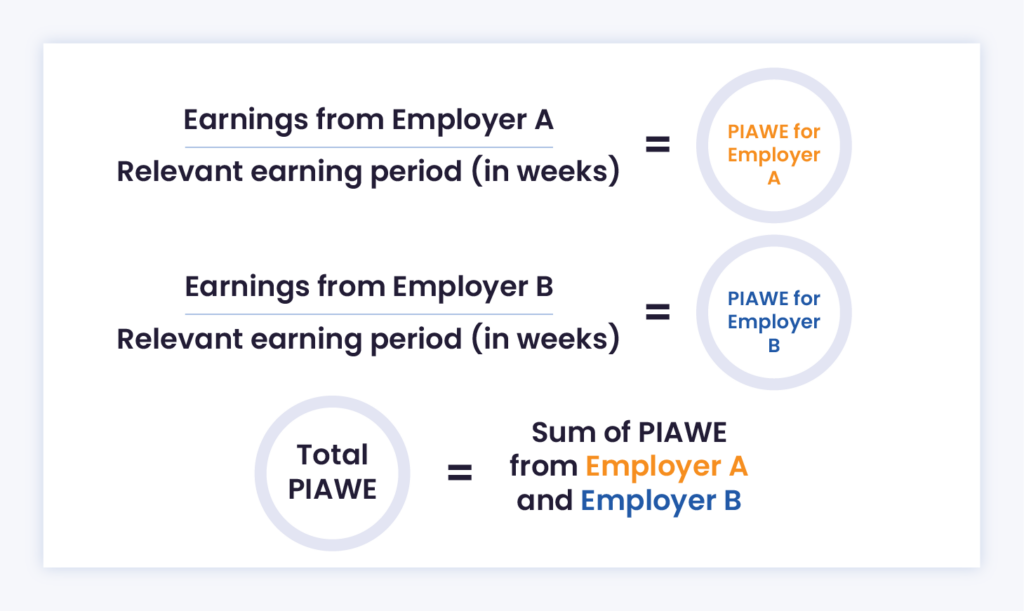Our Services
Resources
For Businesses
For Workers
Mar 3, 2025 • 8 min read
Unpack the concept of pre-injury average weekly earnings with us. Learn how PIAWE is calculated, and how it influences both your physical and financial recovery.

Written by: Eisabess Chee
If you’ve been injured at work, you’ll likely encounter the term “PIAWE” (pre-injury average weekly earnings). Simply put, PIAWE is the weekly average of what you earned before your injury, and it’s the basis for calculating the weekly payments you’ll receive while recovering.
This guide is designed to help injured workers and their support network navigate this important aspect of workers compensation claims with confidence.
PIAWE represents the average weekly earnings before an injury occurred. For injuries on or after October 21, 2019, weekly compensation payments are based on this amount.
Why this matters: PIAWE directly impacts the financial support available during the recovery journey. Accurate PIAWE calculations ensure fair compensation while the injured worker focuses on healing.
Financial security is essential during recovery. Unless there’s a reasonable reason not to, the insurer must start making weekly payments within seven (7) days of being notified about an injury.
Initial payments are probably based on preliminary information. As more details become available, PIAWE might be reassessed, but the injured worker will always be entitled to any difference if the amount increases.
The calculation method depends on when the injury happened.

The formula is simple:
PIAWE includes:
Ordinary earnings during the relevant period
Any applicable shift and overtime amounts
The “relevant earning period” is typically the 52 weeks before the injury. However, this period may be adjusted in several situations to ensure PIAWE fairly represents usual earnings.

The earning period may be adjusted in these situations (applied in this specific order):
Even if calculations result in a lower amount, PIAWE cannot be less than $155. This ensures a baseline level of support during recovery.
There’s also a maximum limit on weekly compensation amounts, which the insurer can explain.
The injured worker and their employer can agree on a PIAWE amount, which speeds up the start of payments. This allows both parties to focus on what matters most: recovery and return to work.

If either the worker or employer later decides to withdraw from the agreement, they can do so by notifying both the other party and the insurer. The insurer will then:
Make a formal decision about PIAWE within seven (7) days
Notify everyone in writing
Adjust payments accordingly, including any back-payments that may be due
If an agreement isn’t reached, the insurer will calculate PIAWE using information from both the worker and employer.
If information is missing: The insurer will use the best available information to set an interim rate so payments can begin promptly.
To ensure an accurate PIAWE calculation, consider providing:
Indexation is an important process that adjusts workers compensation payments to keep pace with the rising cost of living. This ensures the value of payments doesn’t diminish over time due to inflation.
PIAWE amounts are indexed twice a year on specific review dates:
This indexation applies to all compensation periods following the first date of incapacity.
The process is straightforward:
The result is then rounded:
For amounts less than $1,000: Rounded to the nearest dollar
For amounts $1,000 or more: Rounded to the nearest $10
If the indexation factor is less than 1 (which would reduce the PIAWE amount), the reduction won’t be applied to the worker’s payments. However, this reduction will be factored into future indexation calculations to ensure fairness over time.

All earnings are combined to determine total PIAWE.
PIAWE will be updated as the person progresses through age or qualification stages.
PIAWE may be based on what could have been expected to earn in the year after the injury.
Navigating the monetary aspects of workers compensation can be overwhelming, especially when you’re focusing on recovery. Here at AusRehab, we are committed to making your work rehab journey as stress-free as possible.
Our team of experienced compensation specialists can help ensure your PIAWE is calculated correctly, your payments are properly indexed, and you receive every dollar you’re entitled to.
Don’t leave your financial security to chance during this critical time. Contact AusRehab today for a free consultation to review your claim and receive the expert guidance you deserve.
Want to Make a Change? Share with Anyone, Anywhere.
Don’t forget to share!

Eisabess Chee is a seasoned writer with over 8 years of diverse experience in education, journalism and marketing. At AusRehab, she oversees content creation through research, writing, editing, and the crafting of resources that tackle workers compensation and workplace injury. Eisabess also curates the AusRehab newsletter, ensuring it’s packed with valuable and well-researched insights.
Subscribe to stay updated on the latest workplace news.

Resolve your work
place injury today
Be the first to know about our free training programs, videos, articles, and exclusive offers.

AusRehab acknowledges the Traditional Custodians of Country throughout Australia, recognising their deep ties to land, sea, and community.
We pay our respects to Elders past and present and extend our respect to all Aboriginal and Torres Strait Islander peoples today.
© 2025 AusRehab